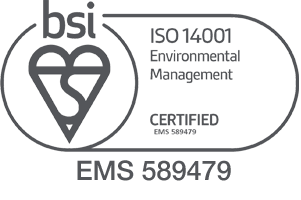


19/09/2024
What are the different types of hospital evacuation?
The decision to evacuate a hospital is based on the assessment of various factors to ensure the safety and wellbeing of patients, staff, and visitors. It is always a last resort, usually if the safety of patients cannot be guaranteed by remaining in-situ. However, due to the immense complexities and risks involved, a hospital evacuation must be executed quickly and correctly, with a minimal margin for error.
A hospital evacuation plan should clearly outline how to evacuate the building and the circumstances in which a partial or full evacuation should occur. Different types of evacuations are needed depending on the nature and severity of the situation, which we'll explore in this article.
Types of evacuation in hospital
When an incident occurs that may require the evacuation of part or all of a hospital building, healthcare managers must quickly evaluate the circumstances and determine the appropriate type of evacuation to initiate.
There are three main types of hospital evacuation:
Partial evacuation
A partial evacuation involves moving patients, staff, and visitors away from the area of danger to a safe part of the same building. For example, if there is a limited fire, chemical spillage, or other contained threat that does not impact the entire site.
In a partial evacuation, only those in the affected area are evacuated, typically horizontally to a nearby wing or vertically to upper or lower floors. Patient care is consolidated and redirected to other operational areas of the hospital during the incident.
Once the hazardous situation is resolved and the evacuated area is deemed safe, occupants can return. A partial evacuation aims to minimise disruption to operations throughout the building while responding effectively to the specific threat.
Full site evacuation
If the threat is more widespread or it could potentially escalate and impact a wider area, a full site evacuation may be necessary. This involves evacuating all patients, staff, and visitors from all parts of the affected building.
A full evacuation requires extensive coordination to triage patients, deploy transport, identify alternative facilities, and track people and resources. It is logistically complex and hugely disruptive and, if managed poorly, can expose patients to risk.
Off-site evacuation
In the most critical situations, an off-site evacuation that removes everyone to a completely separate location may be required. An example would be a natural disaster that renders the hospital uninhabitable or if extremely hazardous conditions in the locality threaten patient and staff safety.
An off-site evacuation requires patients, staff, equipment, and supplies to be transported to a safe zone, possibly several miles away. Patients may need to be transferred to other healthcare facilities, temporary shelters, or both. It is an immense undertaking that requires meticulous coordination across multiple agencies.
Don’t leave patient safety to chance
By having well-rehearsed emergency protocols and evacuation plans for different situations, hospitals can respond quickly and effectively when an emergency evacuation is merited to protect people's lives. Preparation through drills and securing the necessary resources are crucial to successfully navigate any type of hospital evacuation.
Book a free hospital evacuation consultation
To find out more about how well-prepared your hospital is for an evacuation, please book a free consultation with TSG Associates today.
Image Source: Canva










